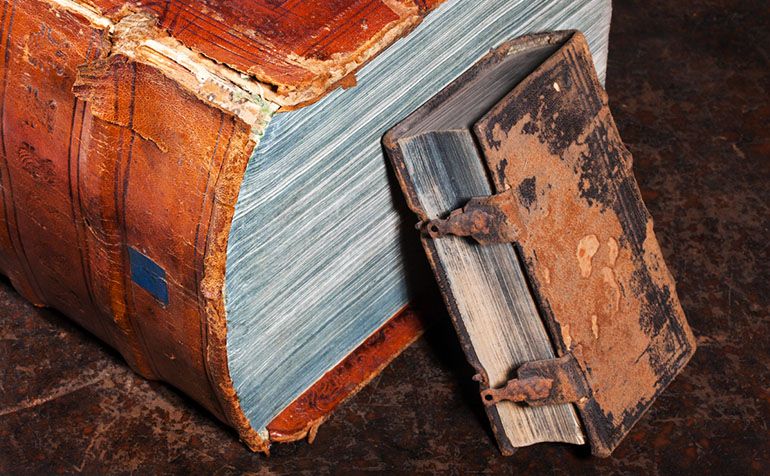We are all children
of our history...

The 2017 NEOGRAFIA calendar is a tribute to the cultural heritage of books.
It presents one of the oldest and most noble collection items of the SNK – Slovak National Library.
They were brought again to the light of today, by the modern techniques of picture reproduction by Neografia printing house.


SLOVENSKÁ NÁRODNÁ KNIŽNICA
www.snk.sk
production:
NEOGRAFIA
SLOVENSKÁ NÁRODNÁ KNIŽNICA | SLOVAK NATIONAL LIBRARY
photo: Juraj Gavura (www.jurajgavura.sk)
design: Igor Slovak | RUN Group (www.run.sk)
TITULNA STRANA | TITLE PAGE
Biblia germanica I. Augsburg , Günther Zainer, 1477
Výzdoba úvodného fólia augsburského vydania Biblie germaniky (prvý preklad Biblie do nemčiny). Kolorovaná a zlatená drevorezová iniciála písmena B, ktorá zachytáva cirkevných otcov v dialógu nad prekladom biblie. Orámovanie litery B tvorí zlatá plocha s puncovaním. 85 x75 mm.
The decoration of the initial sheet of the Augsburg´s edition of the Bible Germanika (first translated the Bible into German language). Colored and gilded initial letter B ca4ptures two priests in the dialogue over the translation of the Bible. Framing of the letter B is made by a special gold embossing technique. It’s 85 x75 mm large.
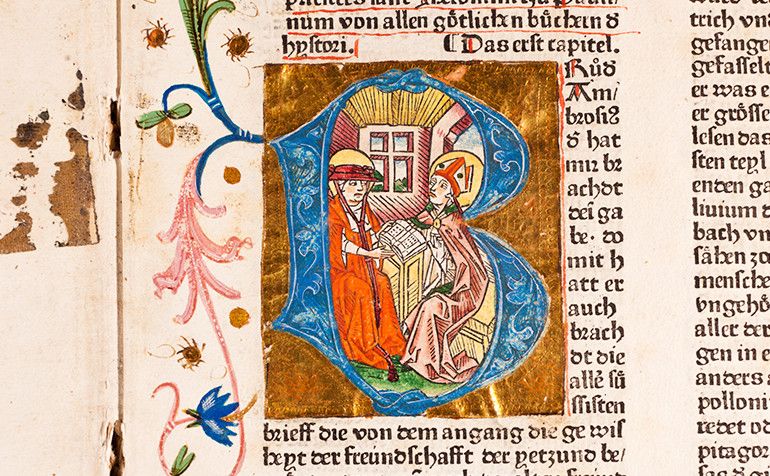
I.
Psalterium Romanum …. Venetiis, Balleoniana,1756
Väzba je kožená, zdobená s výraznými zdobenými kovovými nárožnicami a sponami. Kniha bola často používaná. Je to vidieť na jej opotrebovaní a množstve záložiek, ktoré sú súčasťou knihy. Kniha má rozmery 50 x 35 cm.
Leather binding is decorated with metal clamps, corners other metal elements . The book was very often used what can be determined by a number of bookmarks. It’s 50 x 35 cm large.
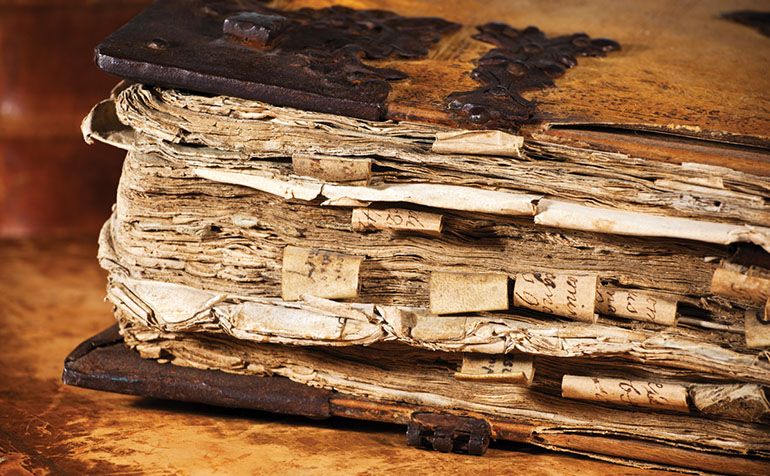
II.
Histoire generale des voyages ... Paris, 1747
Ukážka typickej väzby osvietenských tlačí v 18. storočí. Výzdoba chrbtov v medziväzových partiách zlatiacimi štočkami a filetami s aplikovanými štítkami titulov kníh. Tlače pochádzajú z historickej šľachtickej knižnice Mikuláša Forgáča.
Typical sample of books from the Age of Enlightenment, printed in the 18th century. Decorative spines with golden embossing and golden look labels with book titles. Books were a part of the historical library of aristocrat Nicholas Forgáč.
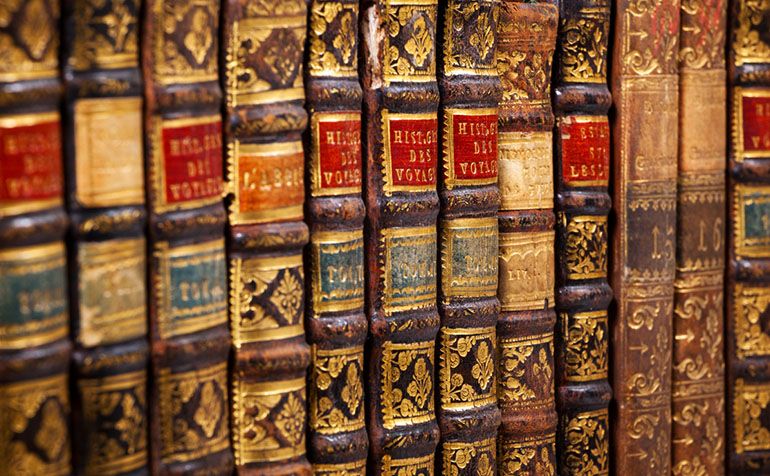
III.
Biblia germanica I., Augsburg, Günther Zainer, 1477
Prvý preklad biblie do národného jazyka (do nemčiny). Ukážka šitej väzby. Je veľmi odolná, kvalitná a pri manipulácii s knihou je mala pravdepodobnosť poškodenia (rozpadu knižného bloku). Červená oriezka inkunábuly a dvojfarebný kapitálik má estetickú i praktickú funkciu, ktorou je spevnenie hlavice chrbta.
The first translation of the Bible in German language. Sample of a very durable and quality thread stitched binding protecting the book block from damage and decay. Red-edged of incunabula and two-tones head and tail band has both - esthetical and practical function - preventing dust to penetrate into the book block.
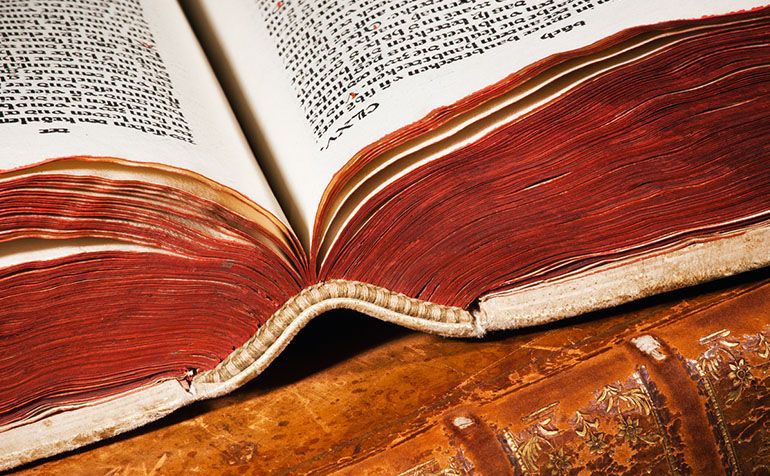
IV.
Ukážka mramorovanej oriezky, ktorá mala okrem estetickej funkcie aj praktickú, pretože zabraňovala prenikaniu prachu do knižného bloku. Tlače pochádzajú z historickej šľachtickej knižnice Čákiovcov zo Spišského Hrhova.
Sample of edged marbling, which except the esthetical function, has also a practical feature. It prevents dust penetrate into the book block. These prints come from the historical library of aristocratic family Čáky from Spišský Hrhov.

V.
Rôzne typy výzdoby chrbtov s aplikovanými štočkami v medziväzových partiách s uplatnením zlatiacich a slepotlačových motívov.
Different types of book spines decorated with gold embossing.
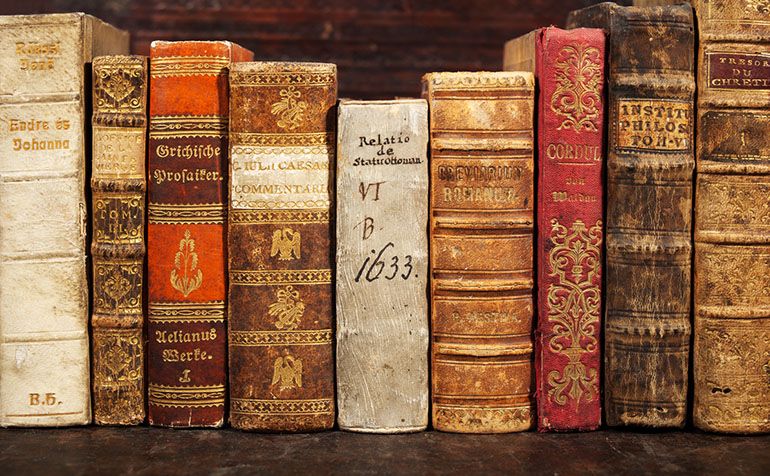
VI.
Ukážka goticklého (švabachoveho) písma, ktoré sa používalo v nemeckých tlačiach od stredoveku až do 20. storočia.
Sample of Gothic (Schwabach) fonts used in the German press from the Middle Ages until the 20th century.
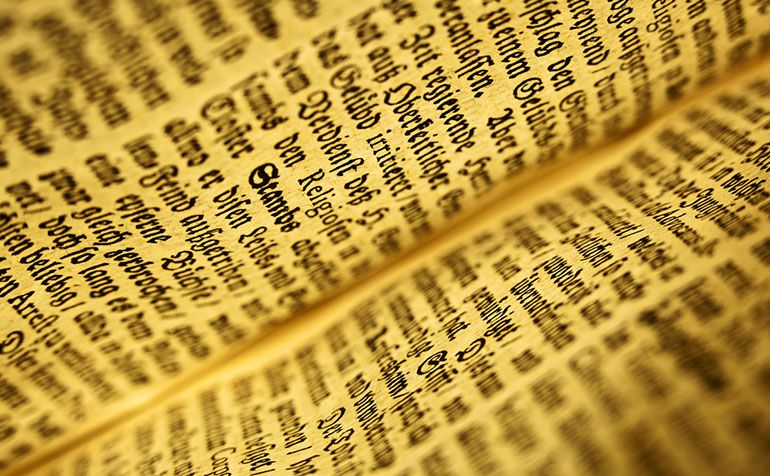
VII.
Hugo de S. Card. : Postilla super Psalterium, Norimbergae, Koberger , 1500
Kaligraficky zobrazený titul knihy, resp. vlastníckej značky, umiestnenej na spodnej oriezke. Často býval umiestňovaný aj na prednej oriezke a pri hlave knihy.
Book title and ownership mark caligraphed on the bottom edge of the book. This signatures were also often placed on the front edge in the head part of the book.

VIII.
Homiletische Bibliothek für Seelsorger und Prediger. St. Pölten, 1788
Ukážka jednotnej väzby v medziväzových partiách, ktorá bola vyhotovená tzv. kolkovaním (vtláčaním ) reliéfnych štočkov. Názov - titul sa umiestňoval spravidla v 2/5 od hlavy knižného chrbta.
Sample of books series with spines decorated using special technique of reliefs handmade with a small finishing tool. The title was usually placed at 2/5 height of the spine.

IX.
Johannes de Turócz: Chronicle of Hungarorum (Kronika Jána z Turca / Chronicle of John de Turócz) Brno 1488
Autor pochádzal z historického územia Slovenska, ale tomuto územiu v kronike nevenuje osobitnú pozornosť. Napriek tomu tu nájdeme slovenské pomenovania niektorých lokalít a osôb, napr. prvýkrát v tlačenej forme sa spomína Zlowachko – Slovačko (bol to jeden z veliteľov bratríckych družín na Slovensku).
The author lived on the historical territory of Slovakia, but he did not mention this territory in the Chronicle. Nevertheless, we can find some Slovak naming of the sites and persons. For example there is a mention of Zlowachko - one of the commanders of Husites retinues operating in Slovakia. It is than a first known printed mention of a word which is clearly combined with the world Slovakia.

X.
Breviarium Romanum… Venetiis, Balleoniana, 1758
Ako ochranný prvok sa v minulých storočiach najmä na knihách, kde bola pravdepodobnosť častého používania (napr. breviáre, misály a pod.) často používali kovové ochranné prvky – nárožnice, ktoré chránili knižný blok na najcitlivejšom mieste a kovové spony, ktorými sa kniha zopla a zabránilo sa deformovaniu a poškodeniu knihy.
Metal edges were often used as a prevent feature in frequently used books (eg. Breviaries, missals, etc.). It was applied in the most sensitive points. Both with the metal clamps they prevented book block to be damaged.
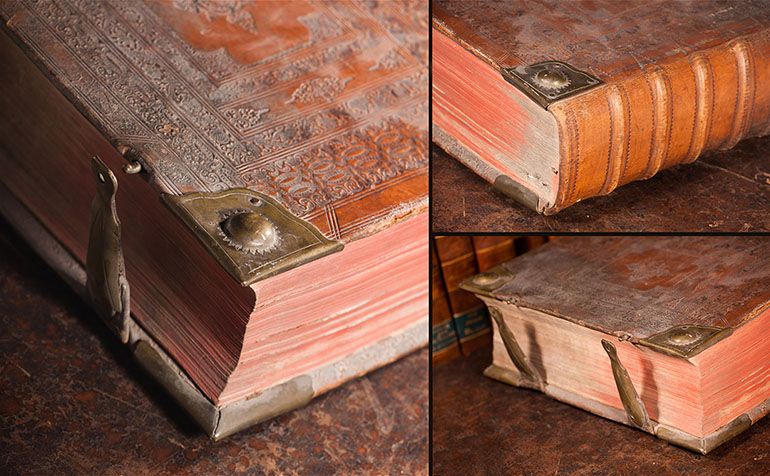
XI.
Theatri Europaei oder, Historische Beschreibung. Franckfurt am Mayn 1692
Ukážka pergamenovej väzby, zdobenej striekaným červeným ( rumelkovým ) pigmentom na oriezku. Knihy pochádzajú zo šľachtickej historickej knižnice Mikuláša Forgáča.
Sample of parchment binding, decorated with vermilion red pigmented edges. Books come from the historical library of the aristocrat Nicholas Forgáč.

XII.
Szent Biblia / Szent Bible, 1590
Pochádzajúca z knižnice šľachtickej rodiny Zaiovcov z Uhrovca. Na titulnom liste je vlastnoručný podpis palatína Juraja Thurza.
The Szent Bible comes from the library of the aristocratic family Zay of Uhrovec. There is a handwritten signature of Palatine George Thurzo on the cover. The small book which is next to, is for the size reference.
